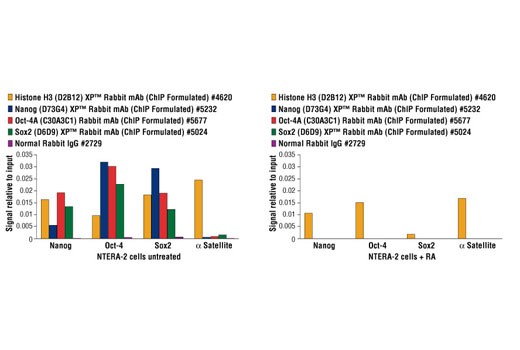
NTERA-2 cells were either untreated (left panel) or treated for 15 days with retinoic acid (RA) to induce differentiation along the neuronal lineage (right panel). Chromatin immunoprecipitations were then performed with cross-linked chromatin from 4 x 106 cells and 10 μl of Nanog, Oct-4, and Sox2 antibodies, or 2 μl of Normal Rabbit IgG, using SimpleChIP® Enzymatic Chromatin IP Kit (Magnetic Beads) #9003. The enriched DNA was quantified by real-time PCR using human Nanog promoter primers, SimpleChIP® Human Oct-4 Promoter Primers #4641, SimpleChIP® Human Sox2 Promoter Primers #4649, and SimpleChIP® Human α Satellite Repeat Primers #4486. The amount of immunoprecipitated DNA in each sample is represented as signal relative to the total amount of input chromatin, which is equivalent to one. Note the loss of Nanog, Oct-4, and Sox2 binding to target genes as NTERA-2 cells are induced to differentiate.
Go to product page
Image may be subject to copyright.